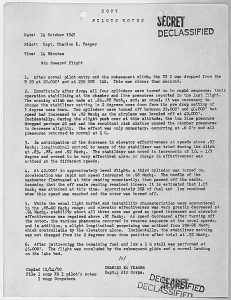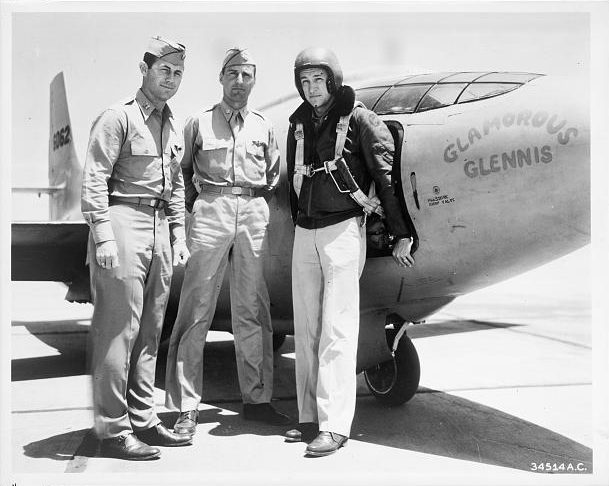
On October 14, 1947, U.S. Air Force Captain Chuck Yeager becomes the first person to fly at supersonic speed – Mach 1 – streaking across in the skies above Southern California.
In a Bell XS-1 rocket plane named “Glamorous Glennis” after his wife, Yeager is dropped from beneath the bay of a B-29 bomber at 20,000 feet over the Mojave Desert near present day Edwards Air Force Base.
Yeager lights the engines, pushing the bullet-shaped jet up to 42,000 feet and speeds over 662 miles per hour, breaking the sound barrier and treating onlookers to the first sonic boom.

“There was no buffet, no jolt, no shock. Above all, no brickwall to smash into. I was alive,” Yeager tells Popular Mechanics in a November 1987 reminiscence of the flight. “Although it was never entered in the pilot report … I had to tell somebody, anybody, that we’d busted straight through the sound barrier. But transmissions were restricted.”
So Yeager says to engineer Jack Ridley, “Make another note. There’s something wrong with this Machmeter. It’s gone completely screwy!”
Ridley understands what Yeager is trying to convey and replies, “If it’s (broke), we’ll fix it. But personally I think you’re seeing things.”

Yeager has spent years in California, first arriving in early 1941 as an aircraft mechanic at nearby Victorville. In 1953, he again becomes “fastest man alive” when he sets a new aircraft speed record of Mach 2.44.
Yeager is a consultant for the air force until his last flight on October 14, 1997. More than a decade later, in 2009, Yeager breaks the sound barrier for the final time in a F-15 fighter above Edwards Air Force Base as part of their airshow and open house.
He dies at 97 on December 7, 2020.
